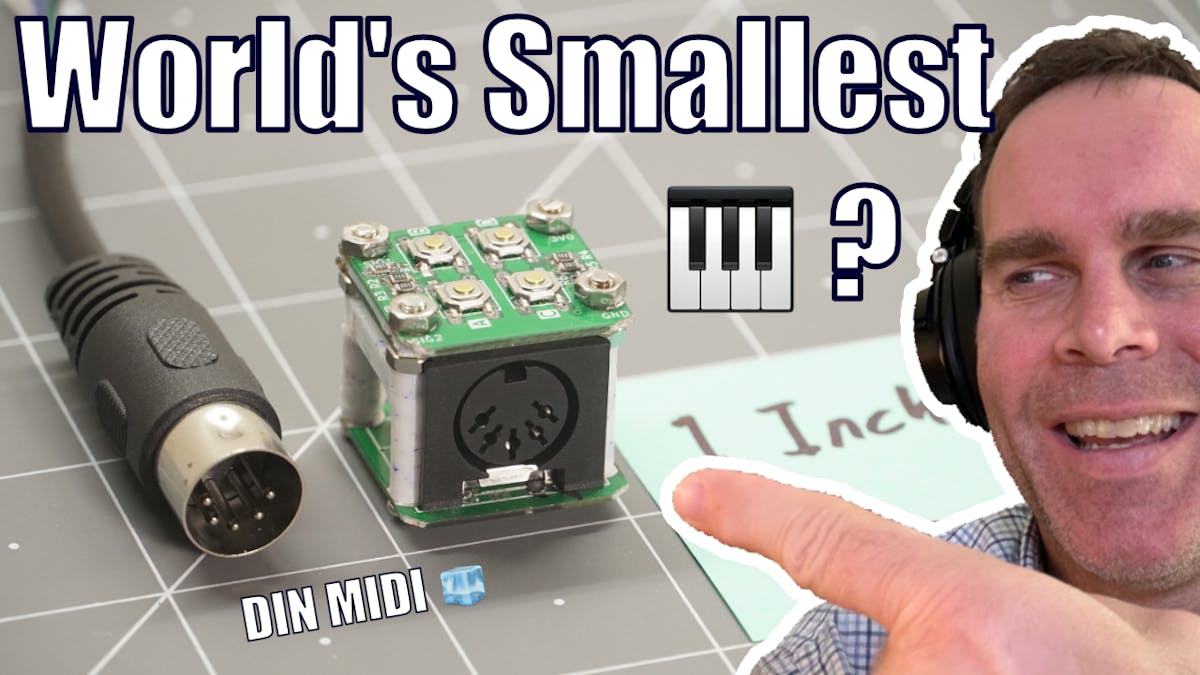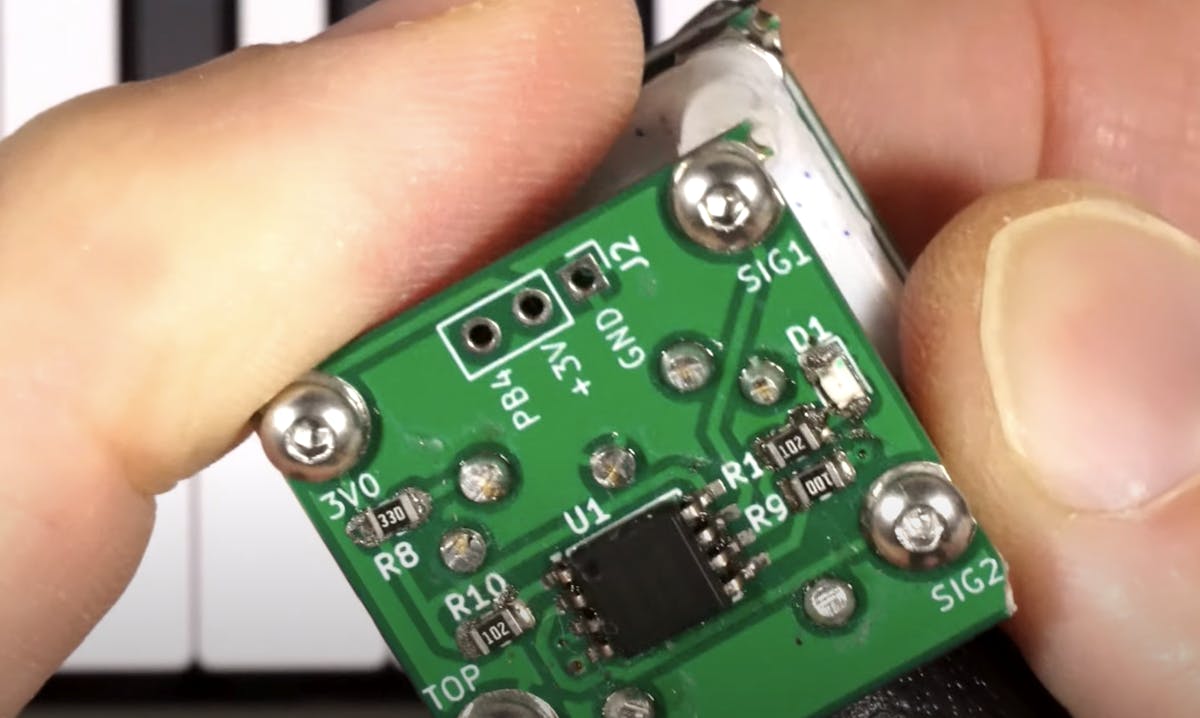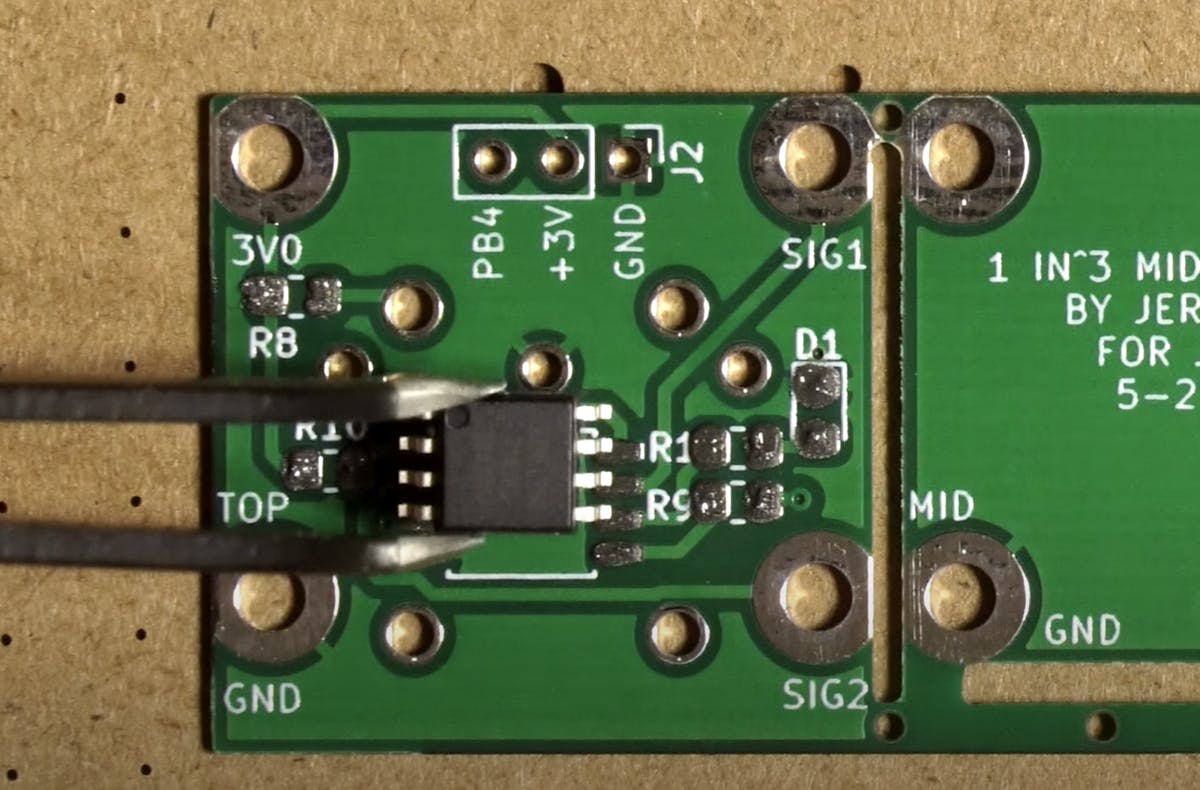One-Inch MIDI
The world’s smallest five-pin DIN MIDI controller in the form of a one-inch PCB cube.

The MIDI, or Musical Instrument Digital Interface, protocol has allowed electronic devices to interact with each other since the early 1980s. While other hardware/software connection schemes are available, MIDI in its original five-pin DIN connector form factor is still very much in use today.
Using modern PCB design and manufacturing techniques, along with the fantastic ATtiny85 in a surface-mount package, I decided to make what I believe to be the world’s smallest five-pin MIDI controller. It's made in the form of a one-inch cube, the bulk of which is the MIDI connector itself. The connector is mounted to a PCB as a through-hole device, with the ATtiny85 arranged within the connector’s footprint on the opposite side. Resistors and an LED are also installed alongside the ATtiny.

The device uses a second and third PCB to connect to and mount a CR2016 battery for power – chosen for its slim 1.6mm profile. On the exterior of the PCB-battery sandwich, four buttons are mounted for control, wired into two ATtiny85 inputs with resistors as voltage dividers. When pushed, each button on an input sends a unique voltage to the microcontroller, as does pressing both buttons simultaneously. This enables the ATtiny85 to read four buttons with just two IO pins.

The board is assembled using 2.5mm screws, which also provide board-to-board electrical connections. An internal 3D-printed structure keeps the device aligned, and the nuts properly fastened for electrical conduction. A 3D-printed plate is also implemented to keep the CR2016 battery from touching the conductive screws. The device does not have an on-off switch, instead sleeping via the TinySnore library to conserve power between signal events.
As seen in the mini concert sequence at ~8:00 in the video below, it works well as a MIDI controller, though having only four inputs does limit your creative possibilities. On the other hand, I did leave an auxiliary input available, and there are lots of ways to program it (code and other info linked in the video description), so who knows what the future will hold for this little MIDI cube!
For another very small MIDI controller – using USB, not five-pin DIN – check out this Teensy 4.0 build by Moby Pixel.
Engineer, maker of random contraptions, love learning about tech. Write for various publications, including Hackster!


